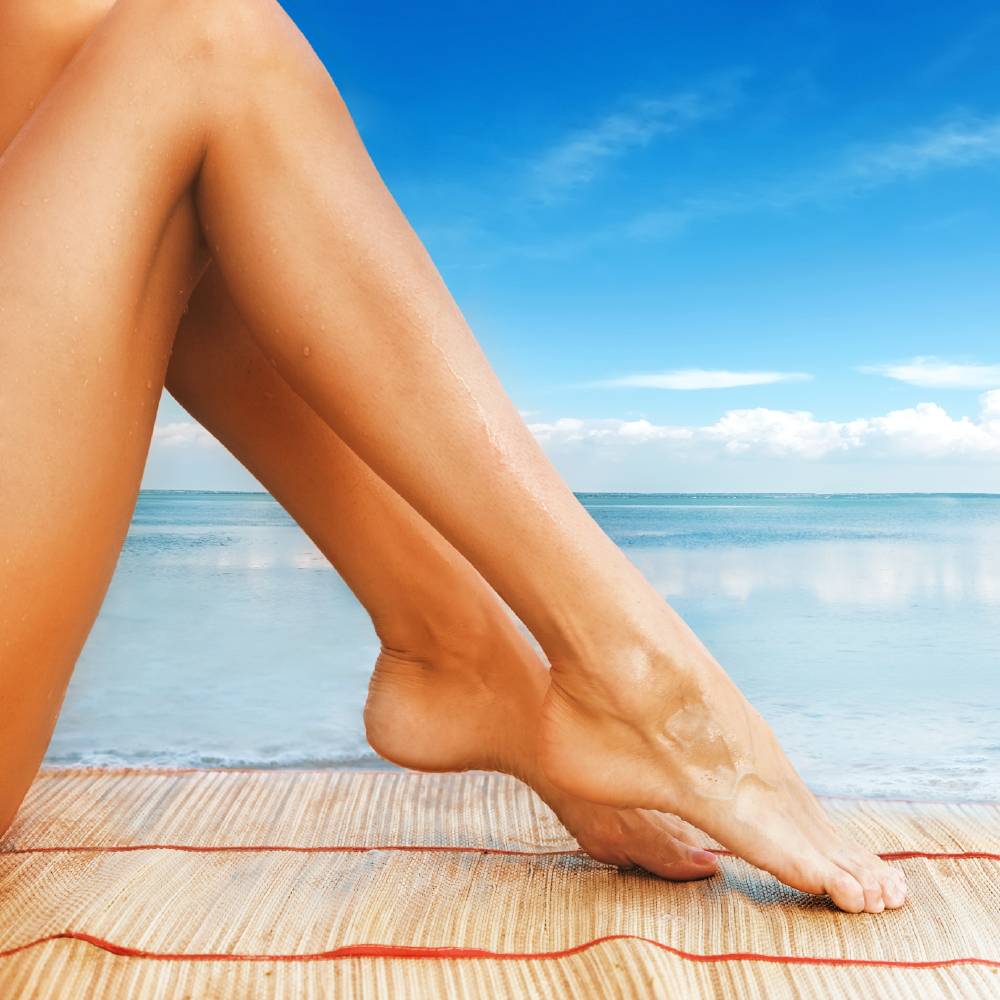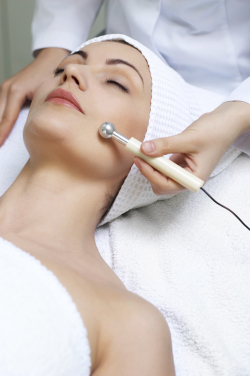
How will you be prepping your legs for summer?
Hair removal may not be the most glamorous of subjects, but it’s something that we all have to do, even more so as we flash more flesh in summer.
So how do you go about it?
With the help of Remington’s hair removal expert Dr Barbara Kubicka, who was trained at the world-renowned College de International de Medicine Esthetique in Paris, we run through everything you may need to know about hair removal, including sensitive skin, beauty myths about hair removal and the latest trend, laser removal.
Which hair removal product is best for sensitive skin?
“IPL machines are the best for those with sensitive skin, as the intense light targets hair specifically leaving the surrounding skin as untouched as possible.”
 “Many hair removal creams available on the high street contain harsh chemicals which can irritate the skin. Waxing and shaving are slightly less harsh on skin, however the ‘tugging’ mechanism can inflame pores leaving them open and vulnerable to further irritation.”
“Many hair removal creams available on the high street contain harsh chemicals which can irritate the skin. Waxing and shaving are slightly less harsh on skin, however the ‘tugging’ mechanism can inflame pores leaving them open and vulnerable to further irritation.”
Are all hair removal products suitable for all skin types?
“IPL products are suitable for skin type 1-4, and work best on people with lighter skin and darker hair. This is because the intense light is attracted to the pigment in hair, so the greater the difference between the skin and the hair, the more effective the IPL treatment will be.”
“IPL technology isn’t suitable for darker skin types as the targeted light is attracted to the pigment in skin, which can ultimately lead to burning. However, clinics and salons contain advanced lasers which are suitable for skin types 5-6.”
What are the best things to do to prepare skin and to care for it after removing hair?
“Exfoliating is key! Scrubs and brushes are perfect for the body with products containing glycolic acid being the best options for the face. Exfoliating not only invigorates the skin, but also tackles tougher and thicker areas of skin where the hair may have more trouble pushing through the skin, which can lead to ingrown hairs”
“Aloe vera is by far the best product to use after a treatment. It soothes and cools skin so try to use a product with as pure aloe vera as possible. If you have been epilating or waxing, oils and moisturisers are a big no no. This is because pores are left open following these treatments, meaning they can easily be blocked and clogged by thick and sticky moisturisers leading to spots and inflammation and rashes.”
Should you do anything in between hair removal treatments?
“Shaving is the only option in between IPL or laser hair removal sessions. This is because the IPL light technology targets hair in the growth stage of the follicle cycle, meaning if the root is removed via epilating or waxing, the light has nothing to target which really limits its effectiveness”
What’s the main difference between salon and at-home IPL / laser treatments?
“The main distinction between at home IPL systems and clinical laser treatments comes down to the strength of the light. Salons and clinics use light technology which has between 15-20 joules, compared to most at home machines which have between 7-8 joules.”
“This difference in light strengths can mean treatment at home can sometimes take longer due to the lower light strength, however this ensures women are using the product safely. The Remington i-Light Pro is an at home IPL machine that contains a sensor to determine skin type and skins suitability for treatment. This ensures the product isn’t used on unsuitable skin which may burn allowing women to use it safely and with confidence at home. Crucially, it also means the machine has a stronger light that most other at home products, increasing its effectiveness”
Are there area’s to avoid with laser and IPL technology?
“We recommend never using at home IPL technology on facial areas above the cheek bone. This is due to the delicate eye area and the potential damage the light may cause. Treatments in salons and clinics can often be used on areas above the cheek bone.”
Which is the best hair removal product to use on the face?
“IPL and laser technology is the best option for facial regions. It limits the irritation to skin and reduces the chance of developing ingrown hairs too”
What’s the best way to reduce pain when epilating?
“There are two main pieces of advice to reduce pain when epilating. Firstly, you can numb the skin with ice or a numbing agent. Secondly, try to epilate often. This weakens the hair meaning it can be removed more easily.”
Top 5 Myths Around Hair Removal – Busted!
Myth: My IPL or laser treatment results are permanent…
Busted: They are long term treatment options however will require maintenance to keep the results. An at home product like the Remington i-Light Pro is a great way to maintain salon results at home quickly and easily.
Myth: I’ll apply moisturiser or oil after epilating or waxing to soothe skin….
Busted: This blocks pores leading to irritation, spots and red patches. Aloe vera is a great natural option to soothe skin following treatment.
Myth: My tan won’t affect my suitability for laser or IPL treatment…
Busted: The increased pigment in skin when we have a tan, fake or not, can increase the likelihood of burning when using an intense light of laser treatment. This is why it’s always important to check skin’s suitability before any kind of IPL or laser session.
Myth: I can wax and/or epilate in between laser or IPL treatments…
Busted: The hair needs to be targeted in the growth stage and with waxing and epilation the follicle is removed, not allowing the hair to reach this stage in its growth cycle.
Myth: I always squeeze, pluck and tweeze in-grown hairs…
Busted: The best treatment method is to exfoliate skin, allowing the hair to push through, rather than coil under the skins surface. There are many chemical products which can also help the hair to come through but you should always see a doctor at any sign of infection”

